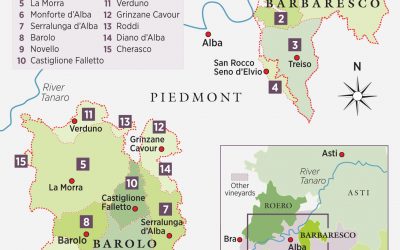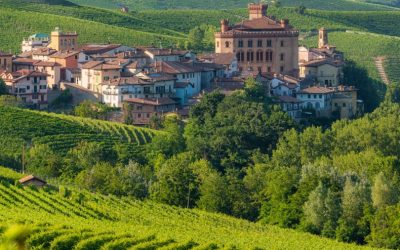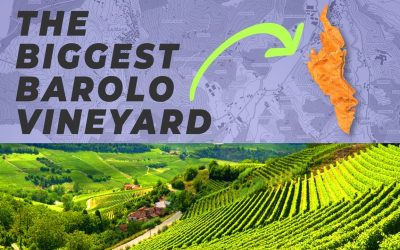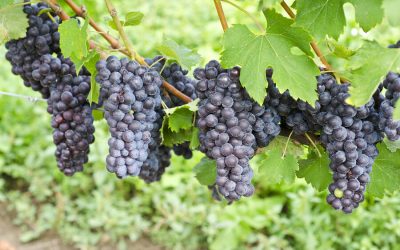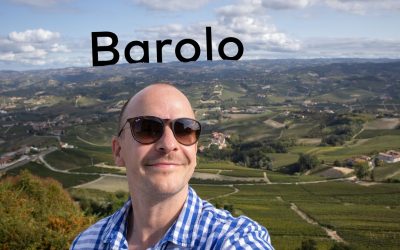Barolo Wines: A Savvy and Worthwhile Investment for Wine Enthusiasts
Barolo: A Worthy Investment
Barolo, often hailed as the ‘King of Wines and the Wine of Kings,’ presents not just a rich sensory experience, but also a worthy investment opportunity. Originating from the Piedmont region of Italy, Barolo’s world-renowned reputation stems from its complexity, depth, and longevity. Its unique terroir, rigorous production regulations, and the exclusive use of Nebbiolo grapes contribute to the high quality and distinctive characteristics of these wines.
Investing in Barolo is a considered venture due to its consistent market performance, limited production, and increasing global demand. The wines’ aging potential and diverse flavor profiles, influenced by the region’s varied soil composition, altitude, and microclimates, offer ample options for investors. However, like all investments, it’s crucial to approach this with knowledge about top producers, standout vintages, and proper wine storage. Despite the financial prospects, remember that the real value of Barolo lies in its extraordinary taste and the enjoyment it brings.
King of wines and the wine of kings
Barolo, often referred to as the “king of wines and the wine of kings,” carries an exquisite reputation in the wine world that sets it apart from many others. With this prestige also comes a relatively higher price tag, causing many to wonder: Is Barolo truly worth the investment?
Let’s dissect this question by considering a few key elements that contribute to the value of a bottle of Barolo.
- Quality of Production: Barolo is made entirely from the Nebbiolo grape, which is notoriously difficult to cultivate. It is highly sensitive to variations in soil and climate, demanding perfect conditions for quality wine production. The meticulous attention required in vineyard management and winemaking processes translates into exceptional quality in the glass.
- Aging Potential: Barolo’s high acidity and tannin content provide an excellent structure for long-term aging. With time, Barolo develops a fascinating complexity, with its initially powerful and robust character softening to reveal layered, nuanced flavors. This maturation can enhance the wine’s value, making older vintages particularly sought after by collectors.
- Terroir: The Barolo denomination is confined to a small area within Italy’s Piedmont region, with its unique microclimate and specific soil compositions being crucial to the character of the wine. This distinct terroir, coupled with strict production regulations, lends an inimitable quality to Barolo that is hard to replicate elsewhere.
- Prestige: Over the centuries, Barolo has built up an illustrious reputation. It is cherished by wine enthusiasts worldwide for its enchanting aromas, deep flavors, and remarkable aging potential. This prestige is undeniably reflected in its price.
In conclusion, whether Barolo is worth the investment ultimately depends on individual preferences. Still, for those who appreciate fine wine’s complexity, longevity, and craftsmanship, investing in a bottle (or several) of Barolo can offer a rewarding and richly satisfying experience.
The Top 10 Barolo Wines and Their Prices
The 2016 vintage in Barolo has been highly acclaimed by critics, hailing it as a “classic” and “stellar” year. Ideal weather conditions resulted in a perfect ripening season for the Nebbiolo grape. The wines from this vintage are known for their balance, complexity, structure, and extraordinary aging potential. Here are ten top-rated Barolo wines from the 2016 vintage:
- Giacomo Conterno Monfortino Barolo Riserva DOCG – Giacomo Conterno is a legendary producer, and their Monfortino Riserva is often seen as the pinnacle of Barolo. The 2016 vintage is no exception, showcasing the balance, power, and finesse this wine is renowned for. This wine is an ideal candidate for long-term aging and will reward the patient investor.
- Bruno Giacosa Falletto Vigna Le Rocche Barolo Riserva DOCG – Bruno Giacosa is another celebrated Barolo producer. The Falletto Vigna Le Rocche 2016 demonstrates the elegance and complexity characteristic of Giacosa’s best vintages. It promises to develop beautifully over the next few decades.
- Elio Grasso Ginestra Casa Matè Barolo DOCG – Elio Grasso is known for producing rich and full-bodied wines. Their Ginestra Casa Matè 2016 offers intense aromas and a balanced tannic structure that will evolve wonderfully with time.
- Gaja Sperss Barolo DOCG – Gaja’s Sperss 2016 is a wine of extraordinary depth and complexity. It showcases the remarkable potential of the 2016 vintage with its balance, concentration, and aging potential.
- Bartolo Mascarello Barolo DOCG – Bartolo Mascarello’s 2016 vintage demonstrates the classic balance between power and elegance. It’s a remarkable example of traditional Barolo winemaking and a testament to the quality of the vintage.
- Giuseppe Rinaldi Brunate Barolo DOCG – Giuseppe Rinaldi’s Brunate 2016 is a standout wine from this vintage, reflecting the classic style of the winery and the full-bodied, complex character of the Brunate vineyard.
- Aldo Conterno Romirasco Barolo DOCG – Aldo Conterno is renowned for his powerful, full-bodied wines. The Romirasco 2016 is a star of the vintage, offering richness, depth, and a structure that will allow the wine to age gracefully.
- Vietti Lazzarito Barolo DOCG – Vietti’s Lazzarito 2016 is a balanced and powerful wine, showcasing the strength of the vintage with its depth of flavor and long aging potential.
- Paolo Scavino Rocche dell’Annunziata Barolo DOCG – This wine from Paolo Scavino is a fantastic expression of the Rocche dell’Annunziata terroir. The 2016 vintage offers a balance of fruit and tannin that promises to develop beautifully over time.
- Domenico Clerico Percristina Barolo DOCG – Percristina from Domenico Clerico is a testament to the high-quality, long-lived wines that 2016 produced. It offers complexity, finesse, and promises to age well for many decades.
The hallmark of the 2016 vintage in Barolo is the harmony between elements. The best wines of the vintage are balanced, with vibrant fruit character, firm but ripe tannins, and fresh acidity, all promising exceptional evolution in the bottle over the coming decades.
In comparison, Bruno Giacosa Le Rocche del Falletto Riserva Barolo DOCG offers a more approachable investment option without compromising on the quality or pedigree. Sourced from some of the finest grapes in each vintage, this wine is known for its elegance and complexity. It offers a harmonious interplay of vibrant fruit flavors, structured tannins, and a lingering finish that captivates the palate. These wines typically retail between $300-$500, offering a somewhat more accessible entry point into the world of premium Barolo investments.
For wine enthusiasts who appreciate the art of winemaking and the exploration of complex, deep flavors, investing in Barolo, the king of wines, is indeed a worthy venture.
What Made 2016 The Perfect Year For Barolo Wine?
The 2016 vintage for Barolo is celebrated as an exceptional year due to the perfect alignment of optimal weather conditions and superior grape quality. The year started with a cold winter followed by a warm and dry spring, allowing for an ideal bud break and flowering. The summer was hot but balanced by well-timed rains, which maintained equilibrium in the vineyards. This was followed by a dry autumn with significant diurnal temperature swings, enabling the grapes to mature evenly while preserving their acidity.
These conditions resulted in the harvest of Nebbiolo grapes of outstanding quality. The balance of sugar, acid, and phenolic compounds was exceptional, a vital component in crafting high-quality Barolo. The tannins, ripe and well-integrated, provided the wines with a firm structure without coming off as overly harsh.
| Characteristics | Why it Matters |
|---|---|
| Favorable Weather | The 2016 growing season in Barolo was near perfect, with a cold winter followed by a warm and dry spring, which allowed for ideal bud break and flowering. The summer was hot but punctuated by well-timed rains that helped to maintain balance in the vineyards. The autumn was dry with significant diurnal temperature variations, which helped the grapes mature evenly while retaining their acidity. |
| Exceptional Quality of Grapes | These optimal conditions resulted in grapes of exceptional quality. The Nebbiolo grapes had a perfect balance of sugar, acid, and phenolic compounds, which is crucial for making high-quality Barolo. The tannins were ripe and well-integrated, giving the wines a firm structure without being overly astringent. |
| Balance and Longevity | The wines of 2016 show a remarkable balance of intense flavors, firm structure, and high acidity, all of which are hallmarks of great Barolo. These characteristics suggest that the wines will have a long life ahead of them, with the potential to develop and improve over many years in the bottle. |
In essence, the weather of 2016 created a harmonious balance of intense flavors, robust structure, and high acidity in the Barolo wines – the defining traits of an extraordinary Barolo vintage. With such characteristics, these wines showcase remarkable potential for aging, promising to develop and improve over several years, if not decades, in the bottle. Thus, the 2016 Barolo vintage is not only a testament to the best of what this Italian wine region can offer but also a vivid reminder of the magic that the right climatic conditions can create in a vineyard.
Should You Invest In Barolo 2016?
Investing in Barolo 2016 is a decision well worth considering for any serious wine enthusiast or investor. The 2016 vintage is hailed as a benchmark year, known for producing wines of remarkable quality and longevity. These wines showcase a perfect balance of intense flavors, robust structure, and vibrant acidity, signifying great potential for maturation and improvement over time. Moreover, renowned wine critics globally have given high scores to this vintage, further increasing its value in the market. Therefore, whether you’re looking to expand your wine collection, seeking wines that will age gracefully over the years, or considering wines for investment purposes, the Barolo 2016 vintage offers compelling opportunities. Given these factors, the 2016 vintage of Barolo wines represent an excellent investment opportunity for several reasons:
- Exceptional Quality: The quality of the 2016 vintage has been widely recognized by critics and connoisseurs alike. The wines are expected to develop and improve in the bottle over many years, even decades, increasing their value over time.
- Collectibility: Barolo is already a highly collectible wine, and a vintage like 2016 only increases its collectibility. Bottles from this vintage are likely to be sought after by collectors and enthusiasts, driving up their value.
- Limited Supply: The supply of high-quality vintages like 2016 is naturally limited, and over time, as bottles are consumed, this supply will only decrease, potentially driving up prices further.
- Resilience: Fine wine, and Barolo in particular, has shown resilience in the face of economic downturns. It can be a good way to diversify an investment portfolio.
However, as with any investment, there are risks, and it’s always wise to do your research or seek advice from a wine investment expert. The future value of any wine will be influenced by a range of factors, including future tasting scores from critics, general economic conditions, and changing consumer tastes.
2016 Barolo when to drink
Aging and drinking Barolo can be an exquisite experience, given the wine’s renowned complexity and longevity. Here’s a brief guide on how to properly age, store, and enjoy a bottle of Barolo.
Aging: Barolo is a wine that often needs significant time to fully express its potential. Typically, wineries release their Barolo wines to the market after three years of aging. However, it’s essential to remember that the aging process doesn’t stop once the wine has been bottled. Ideally, Barolo should be aged for at least five years before it’s opened and enjoyed. But the magic truly happens when the wine is around ten years old. At this point, the wine’s potent tannins have had time to soften, and its flavors have had time to develop and deepen.
Storing: Proper storage of Barolo is crucial to preserve its quality and allow it to age gracefully. The wine should be stored in a cool, dark place where the temperature is consistently between 12 to 18 degrees Celsius. The bottle should be placed on its side to ensure that the cork remains moist and does not dry out, which could potentially spoil the wine.
Decanting and Drinking: Barolo is a full-bodied and tannic wine, so it can benefit significantly from decanting before drinking. This allows the wine to aerate, softening its tannins and allowing its complex flavors and aromas to open up. When drinking, the wine should be savored slowly, allowing its multifaceted character to unfold over time. Enjoying Barolo is not merely about drinking wine; it’s about experiencing the journey of the wine from vine to glass and appreciating the craftsmanship that went into creating it.
5 Wines I’m BUYING In 2023 (& Why YOU Should Too!)

Welcome to this exciting video where we will journey through the world of wines. In 2023, I am looking forward to discovering new flavors and revisiting old favorites from specific wine regions, grape varieties, vintages, winemakers, and vineyards. My hope is that sharing these insights might ignite a similar passion in you.
0:59 Santenay, Burgundy
Our first stop is in Santenay, a charming village in Burgundy. Known for its excellent Pinot Noirs and vibrant Chardonnays, Santenay produces wines that are incredibly expressive of their terroir, offering a perfect balance of fruit, earthiness, and minerality. These are wines that I look forward to uncorking in good company, appreciating the convivial spirit they evoke.
2:08 Singerriedel Riesling
Next up is the Singerriedel Riesling, a remarkable example of Austrian winemaking prowess. These wines are praised for their racy acidity, nuanced fruit flavors, and the remarkable aging potential they offer. A bottle of Singerriedel Riesling can evolve beautifully over the years, and I can’t wait to see how these wines will develop.
3:32 François Chidaine
François Chidaine is an exceptional Loire Valley winemaker who has been a champion of biodynamic farming. His wines, particularly his Chenin Blancs, have a distinctive character marked by lively acidity, rich fruit flavors, and mineral undertones. These are wines that can elevate a meal or be enjoyed in their own right, making them a versatile addition to any gathering.
5:01 Champagne
There’s never a wrong time for Champagne. In 2023, I’m particularly looking forward to exploring more from smaller grower-producers who are taking risks and pushing boundaries. These Champagnes can offer a unique taste profile and an intimate snapshot of their specific vineyard site, proving that there’s always something new to discover even in such a classic wine region.
6:45 Barolo 2016 Vintage
Lastly, we can’t forget about the 2016 vintage of Barolo. Known as one of the best vintages in recent memory, these wines are renowned for their power, complexity, and longevity. Though they might still be young, these Barolo wines have an incredible aging potential. A 2016 Barolo is the kind of bottle that you open for a special occasion, knowing that it will only get better with time.
Note that these are wines that I choose based on my personal preference, with the intention to enjoy them in the company of friends and family. While I don’t purchase wines for investment, the wines in this video are of such high quality that they would be suitable for long-term aging. As always, drink what you love and share it with those you cherish most. Happy wine hunting in 2023!
Conclusion: Barolo: A Worthy Investment
Despite the price tag that might initially raise eyebrows, Barolo’s value goes far beyond simple monetary measurement. Each sip delivers a complex bouquet of flavors, and every bottle carries within it the history and tradition of the Piedmont region. From the meticulous cultivation of the Nebbiolo grape to the attentive, time-honored winemaking process, the high cost of Barolo becomes a testament to its exceptional quality and the unforgettable experience it provides.
